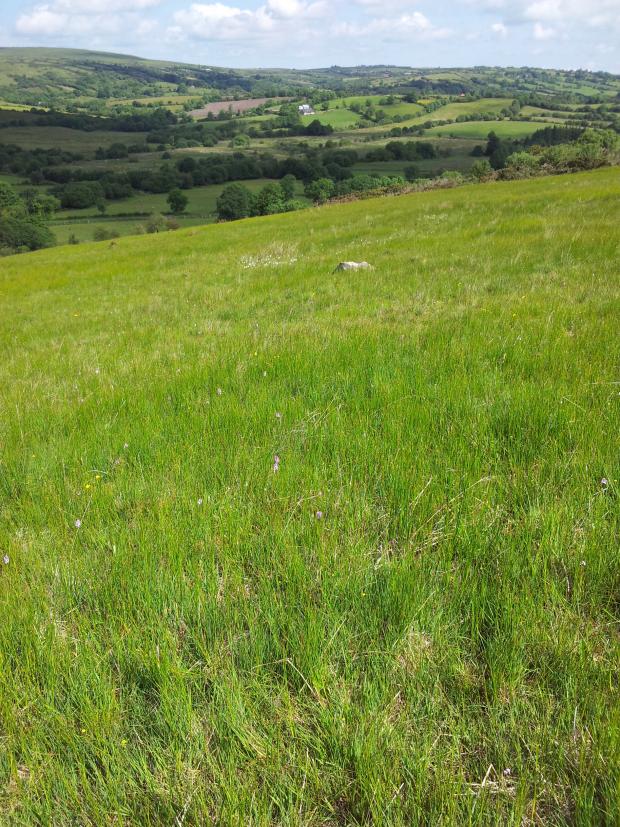
This area is of special scientific interest because of its species-rich wet grassland. Species-rich grassland tends to occur only where land management is not intensive, in particular where traditional farming practices have been maintained. Species-rich grasslands, like those found at Drumowen, are a particularly scarce resource in Northern Ireland.
Drumowen is situated approximately 4km west of Drumquin, on the edge of the uplands, with an altitude of approximately 170m above sea level. The site is underlain by Carboniferous age rocks, dominated by mudstones belonging to the Bundoran Shale Formation. These rocks formed in a relatively shallow marine environment and are base-rich having significant calcium carbonate content. An additional base-rich element is present on the site by way of a dolerite dyke (near-vertical sheet intruded as molten magma into the older Carboniferous rocks). The Carboniferous rocks are some 335 million years old while the igneous dyke is Palaeogene in age, some 60 million years old.
Related articles
- ASSI Guidance for Public Bodies/Competent Authorities
- Coastal Areas of Special Scientific Interest
- Conservation Management Plans (CMPs)
- European Marine Sites - Marine Special Areas of Conservation and Special Protection Areas
- Introduction to Conservation Management Plans (CMPs) for Northern Ireland’s Special Areas of Conservation
- Marine Conservation Zones
- Marine Protected Areas
- Marine Ramsar sites
- Portrush Coastal Zone
- Special Areas of Conservation
- Special Areas of Conservation for Harbour porpoise
- Special Protection Areas
